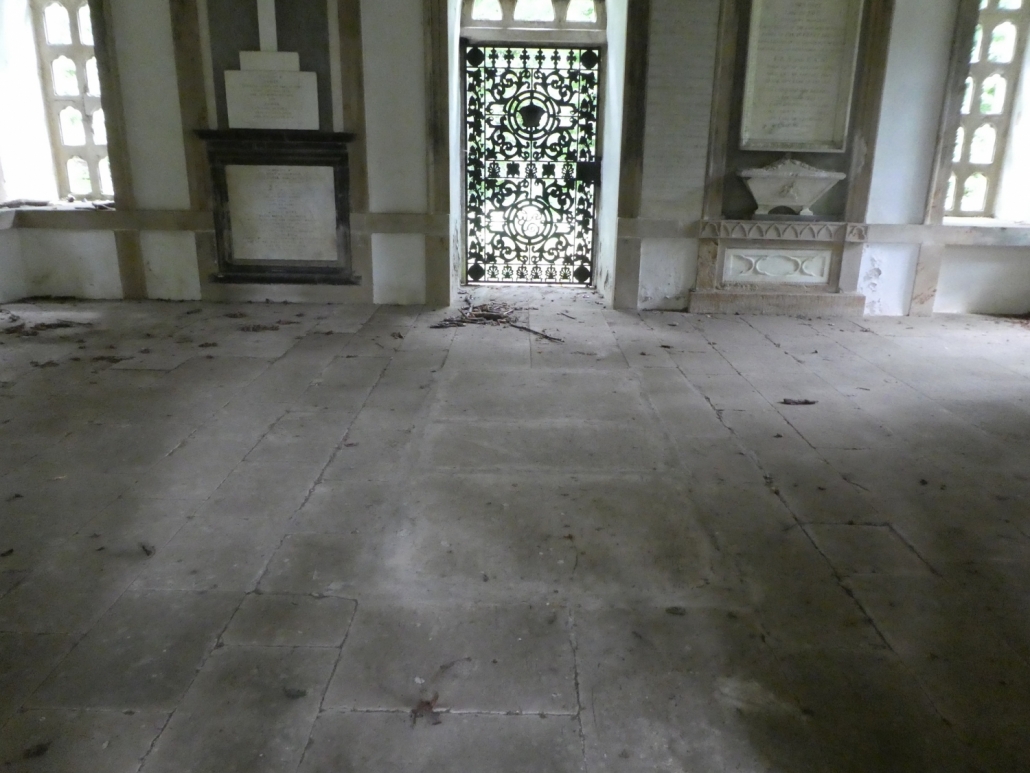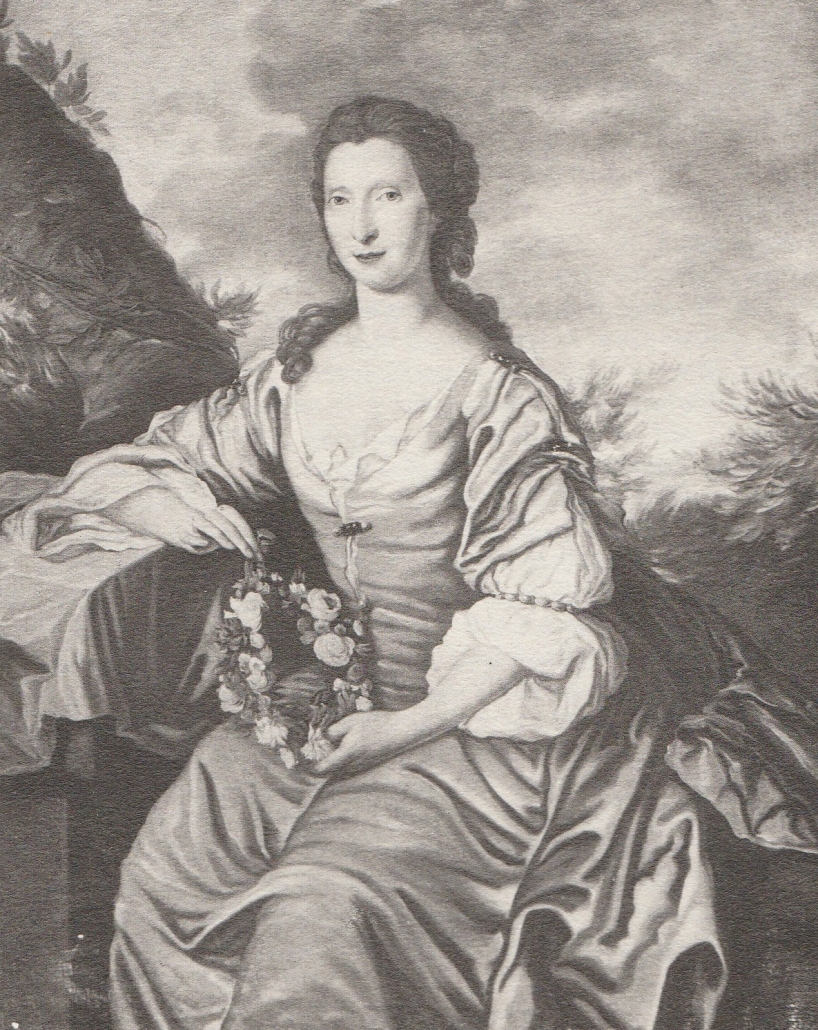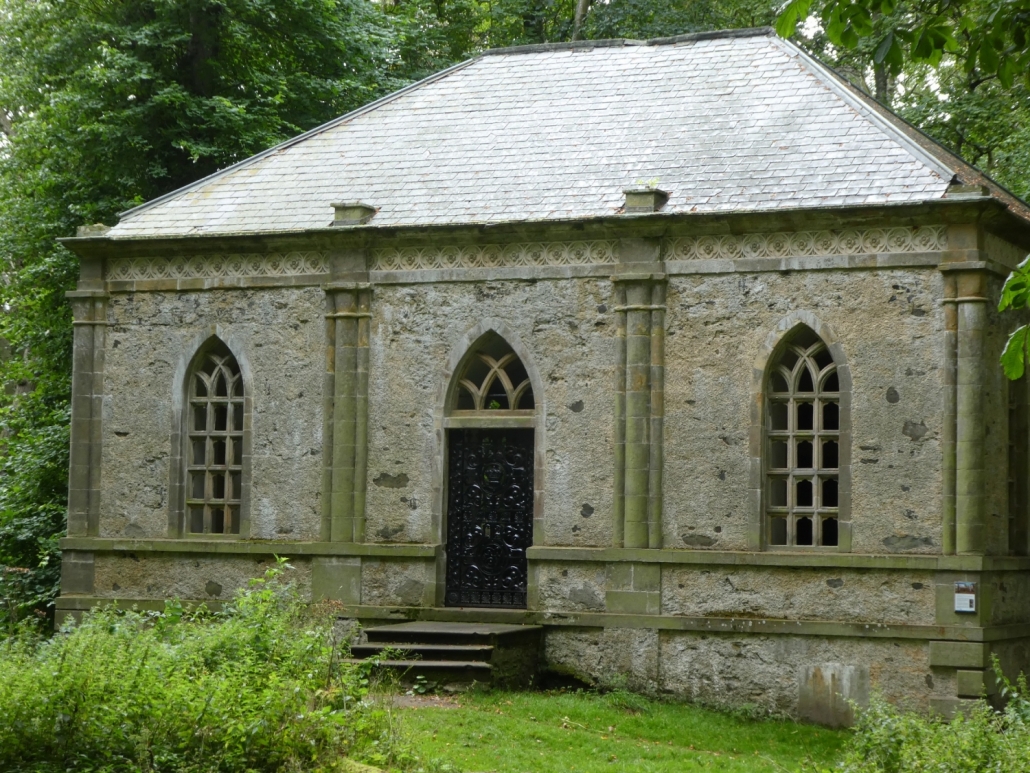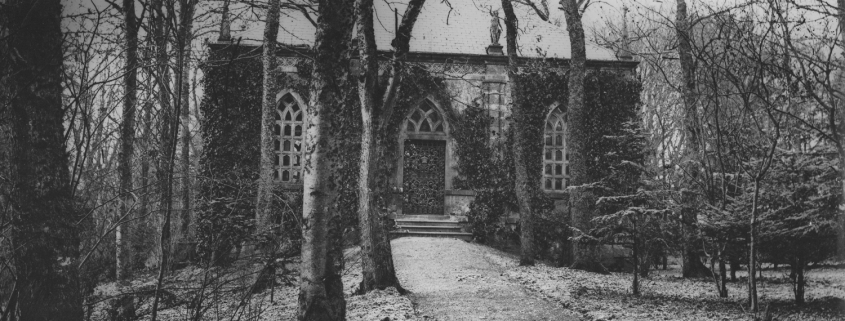Arthur Duff of Orton was the youngest son of William Duff, 1st Earl Fife, and is buried in the Duff House Mausoleum. He was beloved by all and has a bridge and chapel built in his memory.
Posts
At the eastern end of the Mausoleum in Wrack Woods is a memorial to William Duff and his second wife, Jean (or sometimes Jane) Grant, his “Datie”, who he married in 1723 when she was just eighteen. His first wife, Lady Janet Ogilvie, unfortunately had died aged just 25 on Christmas Day 1720 after just a year of marriage (her memorial is also in the Mausoleum). William and Jean were originally buried at Rothiemay but were later re-interred by the 2nd Earl.
As below, their fourteen children experienced mixed fortunes:
Their first son was born in 1724 (when William was 27 years old and Jean was 19), and, as was tradition, he was also called William. From the evidence of several letters the younger William was mostly always “unhappy”, prone to “drinking and idleness”. He had Jacobite sympathies and lived in London with the support of his parents; he seems to have had no profession and never took part in public life. He died in ill-health in 1753.
Two daughters followed, Anne in 1725 and Janet in 1727. At the ages of 14 and 12 respectively while ‘passing the season’ with their father in Edinburgh both caught smallpox quite badly. Anne, although scarred, married her cousin, Alexander Duff of Hatton and lived until she was 80. Janet was described by her father as a “very thoughtless and imprudent girl”, perhaps because she married a Jacobite and then followed him into exile in north-eastern France. After her husband’s death she seems to have been forgiven by her parents, and had five years of happy married life with George Hay from Mountblairy (between Banff and Turriff), passing away in 1758 from general ill health.
James was born in 1729, later becoming the 2nd Earl Fife; followed two years later by Alexander, later the 3rd Earl Fife.
The sixth child, Jane, came next in 1732. The Aberdeen Journal says she was “an agreeable young lady”. She married William Urquhart of Meldrum at age 21, but died relatively early in 1776.
The fourth son, George, was born in 1736 and was well educated in St Andrews, but had to hastily marry in 1756; they lived in London. Unfortunately it seems George’s first son, James, was placed in a private asylum under a false name, which only came to light more than 60 years later. George’s brothers complained about his want of friendliness and sociability! George died in 1818.
Five more children followed annually thereafter: Lewis in 1737, then Patrick, Helen, Sophia and Catherine. Lewis was initially in the army, serving in Canada and America but disliked it even though his long-suffering wife travelled with him. He later built what is now known as Blervie House near Forres. Patrick died shortly after birth. Helen married Admiral Robert Duff but died in Gibraltar when only 39. Sophia lived until she was 77, as the third wife of Thomas Wharton, Commissioner of Excise, who her mother describes as having “so many whims of his own, without considering Sophia”! Catherine seemingly didn’t marry and hardly left home, dying in ill health at just 24.
The seventh and youngest son was Arthur who came along in 1740. He seems to have been everyone’s favourite, of an exceptionally sweet nature, with his father perpetually calling him “my Attie”. He became an advocate and reportedly a very diligent MP in London. He lived until 1805; not all available lists have him as buried in the Duff Mausoleum.
The last child was Margaret, born 1745, eloped in 1767 with an almost penniless Brodie of Brodie. She died in 1787 when her nightdress was caught light from the fire.
The father, William Duff, made Earl Fife in 1759, died in 1763. Jean Grant remarkably lived until she was 83, dying in 1788, quite some feat having given birth to 14 children!

Shows the 1912 three large stones covering the steps down to the crypt. 
Memorial to William Duff and his second wife Jean, and their fourteen children
About a mile south of Duff House, in a very peaceful location looking over the river, is a Mausoleum built in 1792 by the 2nd Earl Fife, initially for his parents, but now with possibly 21 residents, including the first five Earls. The sixth Earl – who became the first Duke of Fife – was buried at Mar Lodge on Deeside, another of what was the Duff family properties.
The Mausoleum is a rectangular “gothic” building, with stone latticed windows and a slate roof. When a restoration was done in 1912, one of the reasons apparently was that the then stone tiled roof was leaking, and the slate roof was put on top to make it weathertight.
Other work in 1912 included filling in the crypt. As you enter through the main door in front of you are three large stones in the floor which cover the steps that went down. There was then an aisle running left and right, with a total of 22 shelves, in pairs, for coffins. The only location known of any of the listed incumbents is the First Earl and his (second) wife Jean, who are in the northeasterly corner, looking out over the river. His son, James the 2nd Earl, had them brought to the Mausoleum from Rothiemay once the Mausoleum was completed. William the first Earl Fife never lived at Duff House in his lifetime – although he had it built – but has been here now for 228 years!
A list of people buried in the crypt is incised in stone just inside the door; this lists 19 people. It does get a bit confusing because two other lists have been printed in history books, and all three are slightly different. If the lists are combined a total of 21 people are spending their time in the crypt. Monuments to many of them adorn the inside of the Mausoleum itself. The first Earl’s at the east end is made of Coade stone – refer to the separate “story” of 16-Sep-19 for more information. A number of excellent examples exist around the Mausoleum, but the first Earl’s tomb is marred by the crest at the top being damaged by rusting – and hence expanding – supporting metal work.
Originally the windows were filled with coloured glass; years ago fragments could be found on the ground outside, and some remnants can still be seen in the stone tracery. In 2016 a small amount of restoration was done described well by the notice posted at the time:
Please take care around this building as work is underway,
Unfortunately we must repair the damage without further delay,
We do not mean to disturb your visit and would like you to know,
Just what it is we need to fix and how about it we might go.
The window has been vandalised and the tomb is a little green,
The gate is rather rusty and needs much more than just a clean,
So please excuse us while we work, we won’t take too much time,
But watch this space and soon the building will be looking mighty fine.
And indeed, the conservation contractors for Aberdeenshire Council, did a great job. The building was plenty fine enough for a tea party with Their Graces The Duke and Duchess of Fife in 2017 !
A “story” about the Provost Douglas tomb on the outside south wall was put on this site on 11-May-19.
The Mausoleum is normally kept locked, but can be viewed during the grounds guided tours from Duff House (but not during Covid!) or in mid-September for Doors Open Day. For 2020 the latter was a virtual experience and a short Mausoleum video narrated by the Duke of Fife can be seen and heard at https://youtu.be/9koNx6v5Z6A
Duff House is believed to be the most northerly example of what was a really exciting “invention” of the 18th century.




